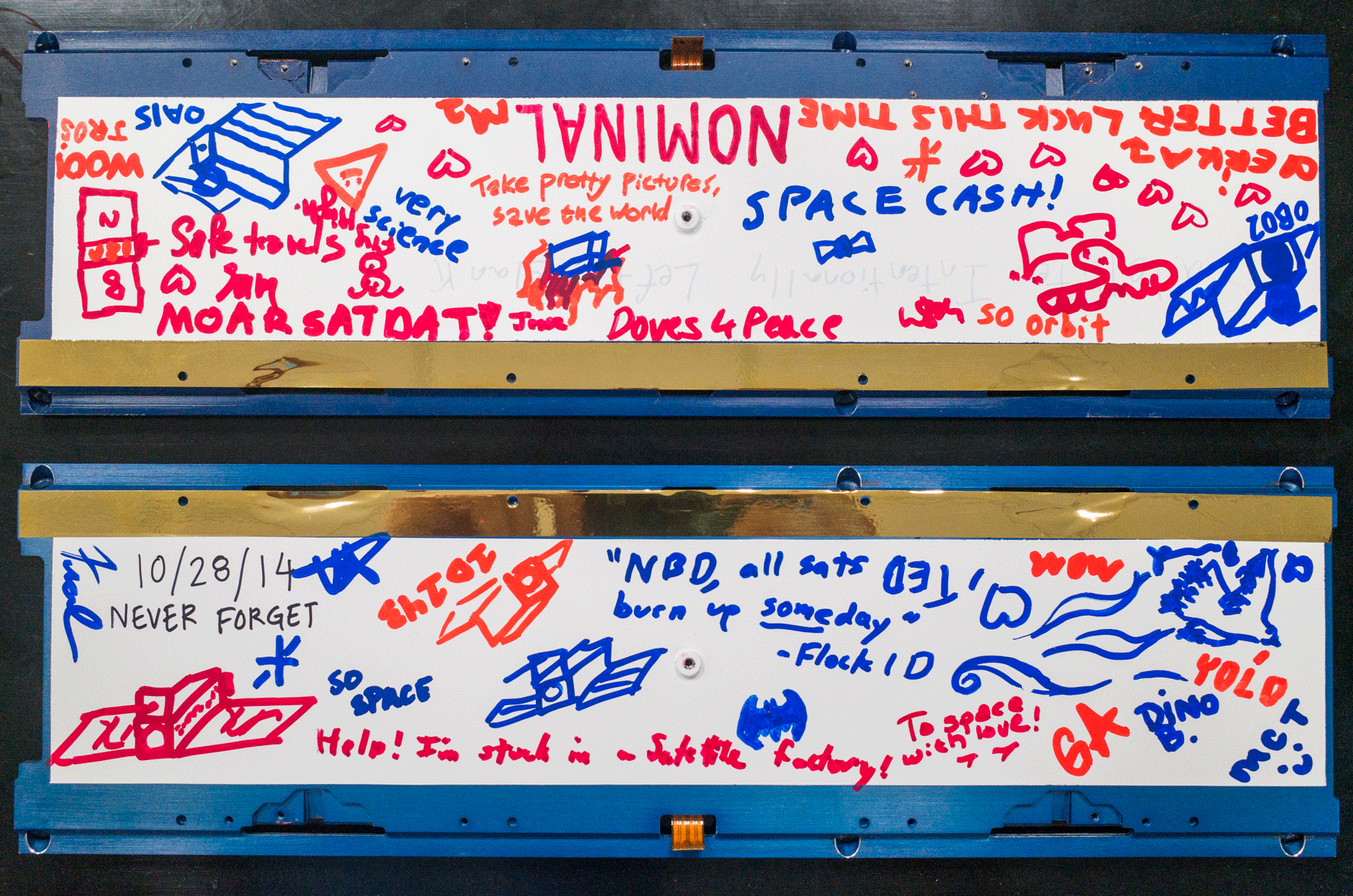Doves Hitch Ride with SpaceX
On October 28, Orbital Sciences’ Antares rocket failed on its way to the International Space Station (ISS). This was a difficult event and our condolences went out to all those affected. That said, since the failure, the response by those affected has been nothing short of amazing: Orbital Sciences stated that they will fulfill their NASA contract obligations by the end of 2015; Planetary Resources intends to be flying in space in September; and in just 9 days, Planet Labs built and delivered two spacecraft to Houston, and has received a preliminary go-ahead from NASA to manifest the satellites on SpaceX-5.
Watch the teams at @OrbitalSciences @PlanetaryRsrcs @NanoRacks and @planetlabs rise to the challenge and quickly come back strong.
— Robbie Schingler (@schingler) October 29, 2014
Let me state that again: within 9 days a spacecraft launch was preliminarily manifested, 2 satellites were built, tested and delivered.
For our engineering team, perhaps the greatest disappointment of the loss of Flock 1D on the Antares rocket was not being able to test all the advances we packed into those 26 satellites. Fortunately, there are consistent and frequent cargo missions going to service the ISS orbit; in fact, about 15% of global launch capacity serves the ISS [1]. Therefore, within hours of the launch failure, we were working with NanoRacks, our launch platform partner for the ISS, to coordinate with NASA to get us re-manifested on a cargo mission as soon as possible. The next available launch opportunity was SpaceX-5 launching in mid December 2014.
On the evening of the launch failure, our team split into two: one to immediately start building replacement Flock 1D satellites and the other to work the logistical and regulatory process to make it possible. Last Sunday, a mere 9 days after the launch failure, we shipped two spacecraft (now known as Flock 1D’) to NanoRacks’ shop in Houston. Also within this period of time, NanoRacks obtained the go-ahead from NASA’s ISS program office for a late load of the 2 Flock 1D’ satellites onto the SpaceX-5 launch vehicle.

Planet Labs team puts messages on the two Doves being sent on the SpaceX-5 launch
At Planet Labs, we pride ourselves on agile aerospace development. Building, testing and scheduling 2 satellites in 9 days is a perfect example of this agility, and we can’t wait to watch the 98th and 99th Dove built, to launch into space and deploy into orbit. Space is definitely hard, but space is also very thrilling. Follow along with the launch, currently scheduled for Dec. 19 at approximately 1:20 p.m. EST (1820 GMT)!
——
[1] To be more specific, according to Jonathan McDowell (@planet4589), ISS used 16 percent of the launches by number, but 44 percent of the launch mass to orbit based on 2013-2014 data (including launch failures).
